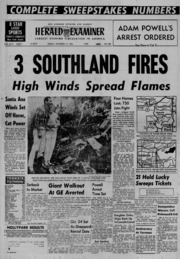
The Los Angeles Herald Examiner was a major Los Angeles daily newspaper,published in the afternoon from Monday to Friday and in the morning on Saturdays and Sundays. It was part of the Hearst syndicate. It was formed when the afternoon Herald-Express and the morning Los Angeles Examiner,both of which were published there since the turn of the 20th century,merged in 1962.

Frank Lawrence Shaw was the first mayor of a major American city to be recalled from office,in 1938. He was also a member of the Los Angeles City Council and then the Los Angeles County Board of Supervisors. His administration was seen as one of the most corrupt in Los Angeles history,although he had some defenders and was never charged officially with any crime.
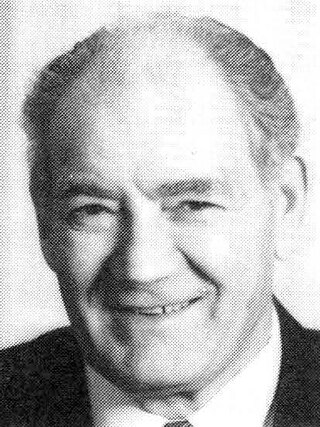
John Ferraro was an American politician and businessman who was a Democratic member of the Los Angeles City Council from 1966 until his death in 2001,the longest tenure of any member in the city's history. Before politics,he was an insurance broker,and had been an all-American football player at the University of Southern California.

Harold M. Bernson was an American politician who was a member of the Los Angeles City Council for 24 years,from 1979 until his retirement in 2003. A conservative Republican,he was a leading proponent of the San Fernando Valley seceding from the rest of Los Angeles.

Joan Milke Flores was an American politician,who served as a member of the Los Angeles City Council for the 15th district from 1981 to 1993. A member of the Republican Party in a largely Democratic body,she also served as the first freshman president pro tem in half a century. Milke Flores ran for California Secretary of State in 1990 and for a U.S. House seat in 1992.

Robert Melvin Wilkinson was a political figure and lobbyist in the San Fernando Valley in California. He was a member of the Los Angeles City Council from 1953 to 1957 and from 1967 to 1979.

Ernani Bernardi was a big band musician and politician. Bernardi served on the Los Angeles City Council from 1961 to 1993,representing 7th district and becoming the second longest-serving council member in the history of the city. Prior to entering politics,Bernardi was the musical arranger for two of the mid-20th century's most popular dance melodies.

John S. Gibson Jr. was an American politician,whose career spanned many decades and two states. A member of the Democratic Party from San Pedro,Gibson served on the Los Angeles City Council for the 15th district from 1951 and 1981,and did two lengthy stints as its president. Earlier in his life,Gibson's tenure as Mayor of Geneseo,Kansas made him the youngest elected mayor in the nation at the time.

Guy Vernon Bennett was superintendent of schools in Pomona,a professor of education at the University of Southern California,and a Los Angeles city councilman from the 10th District from 1935 to 1951. He was defeated for reelection after seventeen years in office in the wake of his arrest on a morals charge. He was a Democrat.
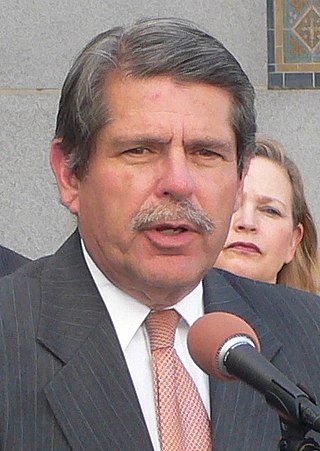
Zev Yaroslavsky is a politician from Los Angeles County,California. He was a member of the Los Angeles County Board of Supervisors from District 3,an affluent district which includes the San Fernando Valley,the Westside of Los Angeles and coastal areas between Venice and the Ventura County line. He was first elected to the board in 1994. Yaroslavsky served on the Los Angeles City Council from 1975 to 1994.
John Schwada is an American political-government and investigative reporter. After he won the Los Angeles Press Club's Lifetime Achievement Award in 2001,the Los Angeles City Council declared August 12,2011 as John Schwada Day in the City of Los Angeles,although in July 2011,Schwada's contract with KTTV expired and was not renewed.

Arthur Kress Snyder was an American lawyer,politician,and restaurateur. He served on the Los Angeles,California,City Council between 1967 and 1985 and later engaged in a private law practice.

Los Angeles's 5th City Council district is one of the fifteen districts in the Los Angeles City Council. It is currently represented by Democrat Katy Young Yaroslavsky since 2022 after winning an election to succeed Paul Koretz,who termed out.

Don A. Allen Sr. was a member of the California State Assembly in the 1940s and 1950s and of the Los Angeles City Council between 1947 and 1956.
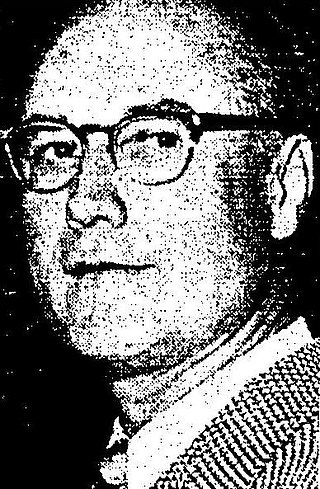
Ransom M. Callicott was president of the National Restaurant Association,co-founder of Meals for Millions and a member of the Los Angeles,California,City Council from 1955 until his death. He was one of the doubters of the proposal to bring the baseball Dodgers from Brooklyn and install them in a new stadium in Chavez Ravine,insisting upon carefully examining the plans for the stadium before it was built.

Peggy Stevenson was an American politician who served on the Los Angeles City Council for the District 13 from 1975 to 1985. The wife of Robert J. Stevenson,she was elected after her husband's death in 1975 and was re-elected twice. She lost to Michael Woo in 1985.

The 1938 Los Angeles mayoral recall election took place on September 16,1938,following the recall of incumbent Frank L. Shaw. Shaw was defeated by Fletcher Bowron in the election,making him the first recalled mayor in American history.

Bernard Healy was a Los Angeles City Council member who was known for his attempt in 1905 to legislate against landlords who refused to rent to families with children,for his support of paid holidays for city workers in the parks and streets departments,and for his large family.
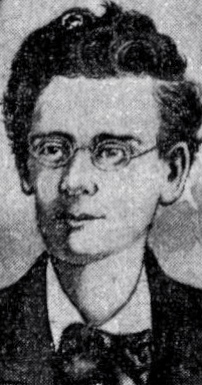
Arthur Duvernoix Houghton was a medical doctor,a botanist specializing in cacti,a member of the Los Angeles,California,City Council from 1904 to 1906 and one of the founders of the American Legion. In his early years he was a showman who presented performances in hypnotism and conducted seances.

The Carlton Hotel is a historic hotel in the Central Business District of Johannesburg,South Africa. It opened in 1972 as part of the enormous Carlton Centre complex,and has been closed since 1998. Its closure has been attributed to the decay of the Central Business District,resulting in a severe crime wave and the flight of the city's corporate offices north to areas like Sandton and Rosebank. This created a plethora of vacant rooms that were unable to be filled. The main hotel tower was closed in December 1997.




















